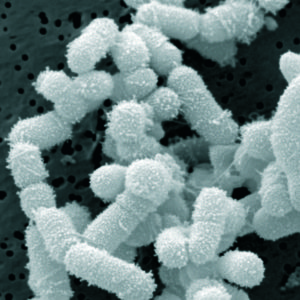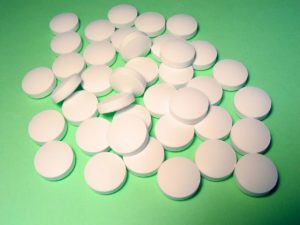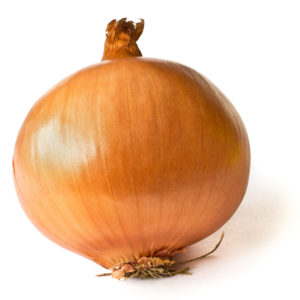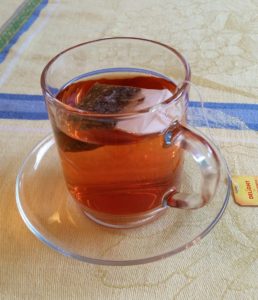 Bacterial vaginosis is a problem for many women, with estimates that up to a third of women of reproductive age get it at some point in life. Bacterial vaginosis is a condition where the microbes in the vagina are imbalanced or out-of-whack, especially with diminishing numbers and types of Lactobacillus species. Lactobacillus species are typically the dominant bacteria in healthy vaginal microbiomes.
Bacterial vaginosis is a problem for many women, with estimates that up to a third of women of reproductive age get it at some point in life. Bacterial vaginosis is a condition where the microbes in the vagina are imbalanced or out-of-whack, especially with diminishing numbers and types of Lactobacillus species. Lactobacillus species are typically the dominant bacteria in healthy vaginal microbiomes.
Unfortunately, some women have recurring bacterial vaginosis (BV), many who wind up taking course after course of antibiotics to try to deal with it. Symptoms can include thin gray, white, or green vaginal discharge, vaginal itching, burning during urinbation, and a smelly fishy vaginal odor. Which is why a small study done in Israel finding success with vaginal microbial transplantation (VMT) from healthy donors to women with BV is very exciting.
Researchers transplanted vaginal fluid (with all its microbes) from 3 healthy women (and thus a healthy vaginal microbial community) into 5 women with severe BV that did not respond well to antibiotics. Afterwards four of the recipients had long-lasting (up to 21 months) vaginal microbial changes and complete remission of BV (2 after the first transplant, 2 after 3 transplants) - becoming more like the donors' vaginal microbiome, and also rich in Lactobacillus. The 5th person had partial improvement of BV, but there were complications - she took a course of antibiotics for a throat infection, her BV symptoms returned, and then she received another vaginal microbiome transplant, after which her vaginal microbes were a mix of her original and the donors.
Of course larger studies are now needed, especially because there can be risks when receiving another person's microbes (e.g. accidental transfer of viruses). But I also want to point out that some of these Lactobacillus species (especially Lactobacillus crispatus) are easily available without a prescription, and women have been self-experimenting with them, many with good success.
Excerpts from Ars Technica - Vaginal-fluid transplants treat incurable condition in pilot study ...continue reading "Vaginal Fluid Transplants Successfully Treat Bacterial Vaginosis"

 Are statins overprescribed? Currently many people without heart disease and at low risk of heart disease are taking them as a preventive, what is known as "primary prevention". Over the years, changes in medical guidelines have resulted in more and more lower risk older healthy people being prescribed statins. But there has been controversy over this: Are the statins really preventing heart disease and deaths in these low risk people? Also, do the benefits outweigh the harms (because all medications have side-effects, some more serious than others)? Finally, are the extra financial costs worth it?
Are statins overprescribed? Currently many people without heart disease and at low risk of heart disease are taking them as a preventive, what is known as "primary prevention". Over the years, changes in medical guidelines have resulted in more and more lower risk older healthy people being prescribed statins. But there has been controversy over this: Are the statins really preventing heart disease and deaths in these low risk people? Also, do the benefits outweigh the harms (because all medications have side-effects, some more serious than others)? Finally, are the extra financial costs worth it? Very depressing news about football.
Very depressing news about football.  Walking is important for health, but walking speed is also important. It turns out that slow walking speed or gait (particularly when trying to walk as fast as possible) is a problem sign already in mid-life (the 40s).
Walking is important for health, but walking speed is also important. It turns out that slow walking speed or gait (particularly when trying to walk as fast as possible) is a problem sign already in mid-life (the 40s).  Once again a study finds health problems from supplements. This time,
Once again a study finds health problems from supplements. This time,  A recently published study found that a strong ability in languages may help reduce the risk of dementia.
A recently published study found that a strong ability in languages may help reduce the risk of dementia.  Two recent studies point out the dangers of air pollution to the developing fetus. The first
Two recent studies point out the dangers of air pollution to the developing fetus. The first  Good news for women who really like to eat onions and garlic! A
Good news for women who really like to eat onions and garlic! A  Did you know that many tea bags contain plastic or are made totally from plastic? And that tiny pieces of plastic (microplastics) from these teabags are released into the hot water when brewing tea?
Did you know that many tea bags contain plastic or are made totally from plastic? And that tiny pieces of plastic (microplastics) from these teabags are released into the hot water when brewing tea?